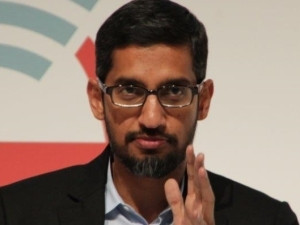
Mobile World Congress 2015: Google is set to soon launch planes into the air, as part of Project Titan, in a bid to expand connectivity to parts of the world without Internet access.
Sundar Pichai, senior VP of products at Google, notes about four billion people have little to no connectivity. Google is tackling this issue by taking the same approach it always had to services, he commented.
Pichai explained to a conference at Mobile World Congress 2015 yesterday afternoon that this approach was to develop services that made people's lives earlier. This was the rationale behind its initial search offering, and its Gmail service, he said.
Google looked at e-mail and search, and felt current offerings were not good enough, so it set out to create new offerings. According to Pichai, to deal with connectivity, Google will partner with carriers to roll out large-scale projects that can fill the void.
Already, the company has put fibre down in places such as Kampala, the capital of Uganda, through Project Link. Pichai adds Google has made great strides with Project Loon, its four-year-old balloon-based connectivity plan.
Project Loon makes use of balloons to get cellphone towers into the sky, but initially battled to get them to stay up for more than five days at a time, said Pichai. Now it is keeping the balloons up for more than six months at a time, and providing long-term evolution instead of the 3G that was previously streamed.
Project Loon began with a pilot test in June 2013, when 30 balloons were launched from New Zealand's South Island and beamed Internet to a small group of pilot testers. The pilot test has since expanded to include a greater number of people over a wider area. In future, Project Loon will continue to expand the pilot, with the goal of establishing a ring of uninterrupted connectivity at latitudes in the Southern Hemisphere.
Its next stage will be Project Titan, which will see it send solar-powered drones into the sky to provide connectivity. The first planes are set to take flight in the next few months, which Pichai noted is its first major step in the project.
Google is trying to create a mesh of planes and balloons to provide connectivity to the world. Pichai added Google is working on many more services, like its translate product, that help people tackle issues that impede everyday life.
* Nicola Mawson is in Barcelona courtesy of Samsung.
Share